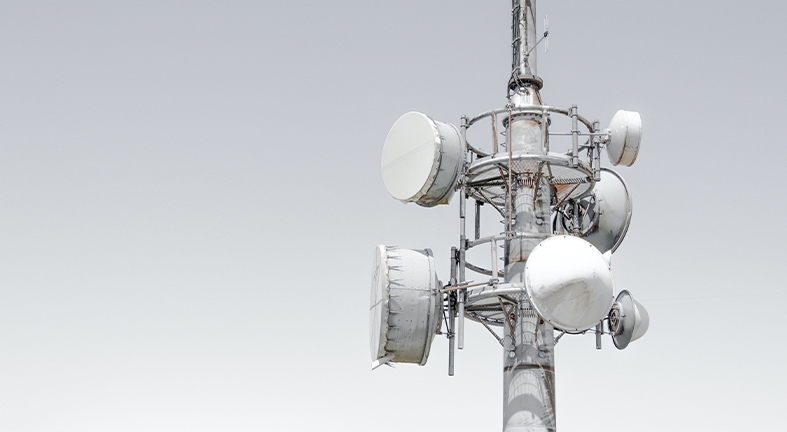
Two years since the $1 trillion Infrastructure Bill was passed, the allocation of the $42.5 billion Broadband Infrastructure Plan to each state and US territory has been announced. To recap, the Broadband Infrastructure Plan aims to eliminate the digital divide by bringing reliable, high-speed internet to every American home, especially those in rural and underserved areas.
This massive funding is carefully allocated to different areas of the country based on factors like the number of unserved homes, existing infrastructure, rural population, and socioeconomic factors set by the Broadband Equity, Access, and Deployment (BEAD) program.
The top 3 state recipients of the BEAD program are Texas, California, and Missouri.
Texas has been awarded the highest amount of $3.3 billion, while California will receive $1.8 billion and Missouri has been allocated $1.7 billion. With many of Texas' rural communities still lacking access to high-speed internet, the state government intends to use the funds to establish comprehensive broadband coverage statewide.
To ensure the equitable distribution of funds, the federal government has also allocated resources to American territories. For instance, Puerto Rico, Guam, U.S. Virgin Islands are set to receive $334 million, $156 million, and $27 million respectively.
For the full list of states and the amount they are set to receive, click here.
The Broadband Infrastructure Plan is one of the most ambitious projects to ensure that no American is left behind in the digital age. By focusing on the states and territories with the highest need, this funding should greatly reduce the disparities in access to high-speed, reliable internet across the nation. These investments will not only help bring internet access to households but also enable more opportunities for remote work, online education, telemedicine, and innovation, thus stimulating economic growth and improving the overall quality of life.
How Can You Take Advantage of the Broadband Infrastructure Plan as a Vendor
The $42.5 billion Broadband Infrastructure Plan opens a lot of opportunities for vendors in various capacities. The scale and scope of the projects that can arise from this plan are extensive, providing a broad range of opportunities for vendors in the digital infrastructure space. If you are a vendor looking forward to opportunities that the Broadband Infrastructure Bill would bring, now is the time to prepare your business.
Broadband infrastructure requires innovative hardware and technology, including fiber optic cables and servers. ISPs with experience working with underserved communities can expect more partnerships to deliver broadband services. Large-scale projects will need experienced project management and consulting firms, as well as a skilled workforce. Investment in broadband creates opportunities for vendors to innovate in delivery models. Cybersecurity will become increasingly important, creating opportunities for cybersecurity firms to offer their services to a broader range of clients.
To prepare your business for the opportunities ahead, you should equip yourself by looking out for bid opportunities, interacting with the communities you intend to serve, and aligning your services with the main objective of bridging broadband access across communities. It is important that vendors showcase how their services not only fulfill technical requirements but also support the social aims of this considerable investment.
Bidnet Direct offers a strong suite of vendor solutions that can help you prepare for opportunities along the way. Registered vendors can get matching bid notifications, access to exclusive bids from participating local and state agencies and federal opportunities, and advertise their business profile to member agencies. Get started today and find your next government contract.
Here are the dollar amounts each state and U.S. territory is set to receive from the BEAD program
|
$1,401,221,901.77 |
|
|
Alaska |
$1,017,139,672.42 |
|
Arizona |
$993,112,231.37 |
|
Arkansas |
$1,024,303,993.86 |
|
California |
$1,864,136,508.93 |
|
Colorado |
$826,522,650.41 |
|
Connecticut |
$144,180,792.71 |
|
Delaware |
$107,748,384.66 |
|
District of Columbia |
$100,694,786.93 |
|
Florida |
$1,169,947,392.70 |
|
Georgia |
$1,307,214,371.30 |
|
Hawaii |
$149,484,493.57 |
|
Idaho |
$583,256,249.88 |
|
Illinois |
$1,040,420,751.50 |
|
Indiana |
$868,109,929.79 |
|
Iowa |
$415,331,313.00 |
|
Kansas |
$451,725,998.15 |
|
Kentucky |
$1,086,172,536.86 |
|
Louisiana |
$1,355,554,552.94 |
|
Maine |
$271,977,723.07 |
|
Maryland |
$267,738,400.71 |
|
Massachusetts |
$147,422,464.39 |
|
Michigan |
$1,559,362,479.29 |
|
Minnesota |
$651,839,368.20 |
|
Mississippi |
$1,203,561,563.05 |
|
Missouri |
$1,736,302,708.39 |
|
Montana |
$628,973,798.59 |
|
Nebraska |
$405,281,070.41 |
|
Nevada |
$416,666,229.74 |
|
New Hampshire |
$196,560,278.97 |
|
New Jersey |
$263,689,548.65 |
|
New Mexico |
$675,372,311.86 |
|
New York |
$664,618,251.49 |
|
North Carolina |
$1,532,999,481.15 |
|
North Dakota |
$130,162,815.12 |
|
Ohio |
$793,688,107.63 |
|
Oklahoma |
$797,435,691.25 |
|
Oregon |
$688,914,932.17 |
|
Pennsylvania |
$1,161,778,272.41 |
|
Rhode Island |
$108,718,820.75 |
|
South Carolina |
$551,535,983.05 |
|
South Dakota |
$207,227,523.92 |
|
Tennessee |
$813,319,680.22 |
|
Texas |
$3,312,616,455.45 |
|
Utah |
$317,399,741.54 |
|
Vermont |
$228,913,019.08 |
|
Virginia |
$1,481,489,572.87 |
|
Washington |
$1,227,742,066.30 |
|
West Virginia |
$1,210,800,969.85 |
|
Wisconsin |
$1,055,823,573.71 |
|
Wyoming |
$347,877,921.27 |
|
American Samoa |
$37,564,827.53 |
|
Guam |
$156,831,733.59 |
|
Northern Mariana Islands |
$80,796,709.02 |
|
Puerto Rico |
$334,614,151.70 |
|
U.S. Virgin Islands |
$27,103,240.86 |
Find your next government contract today!
Search Bids
